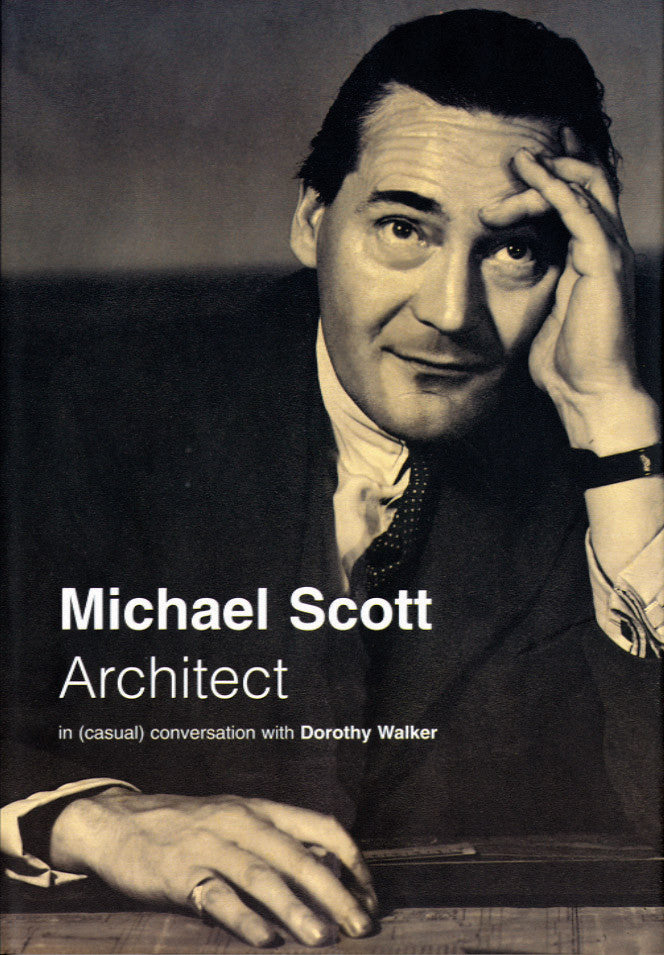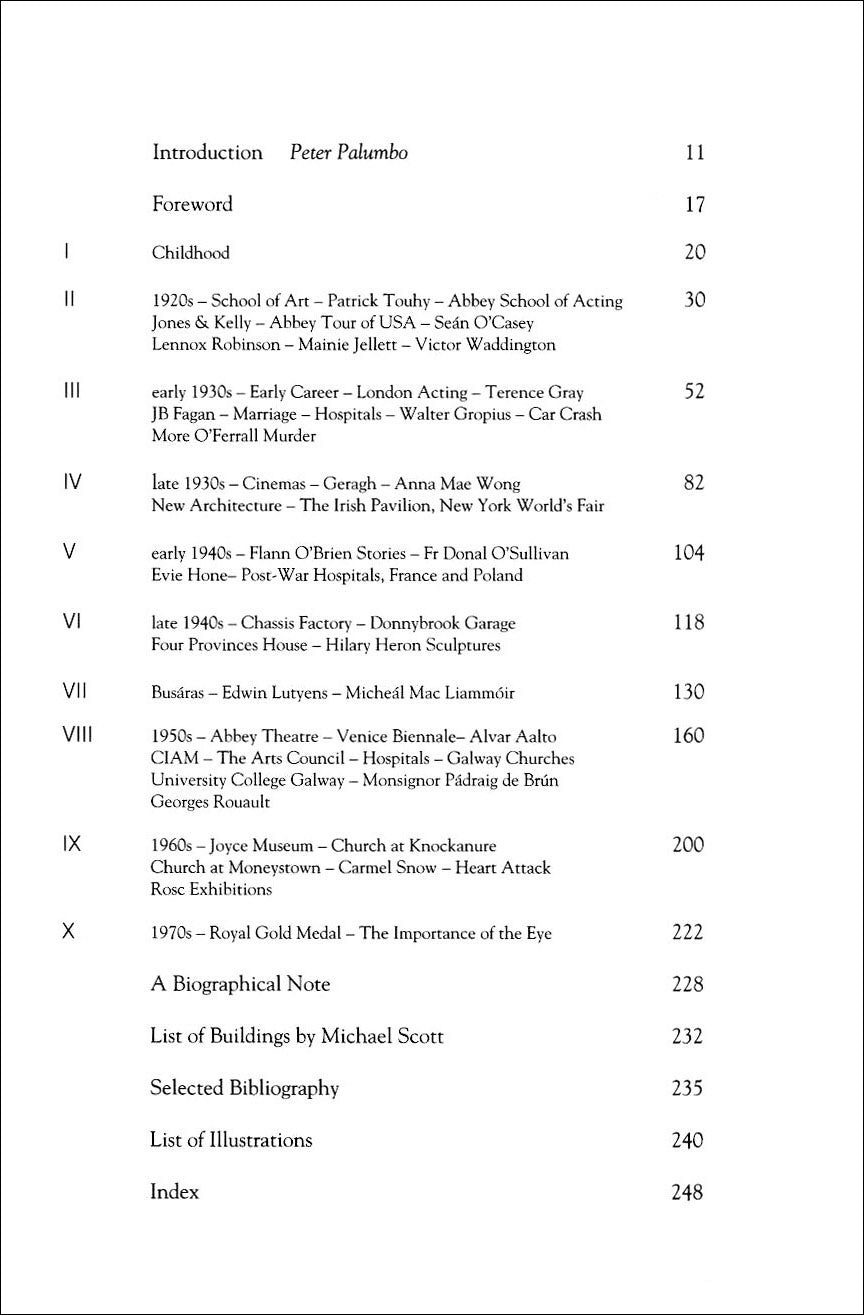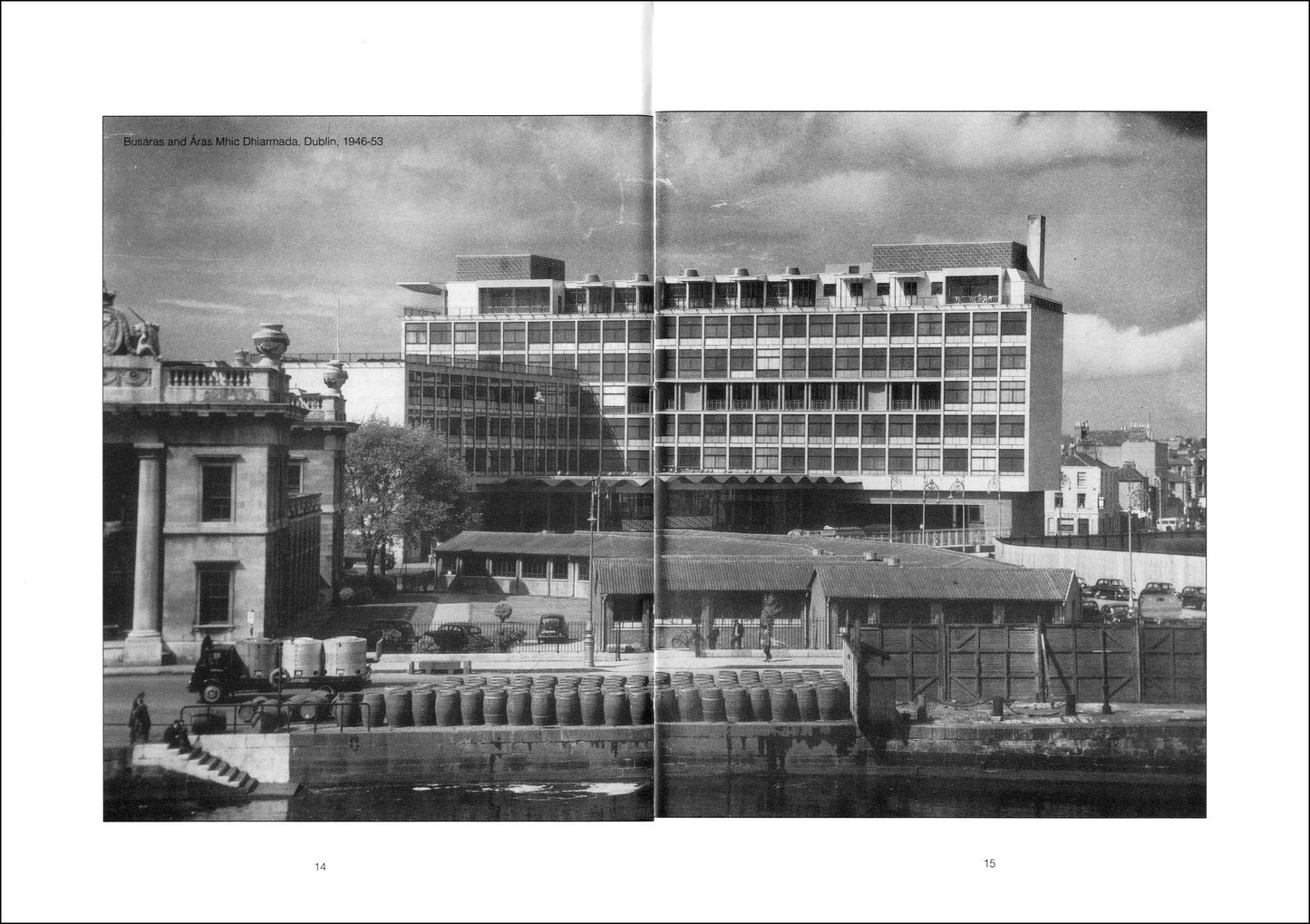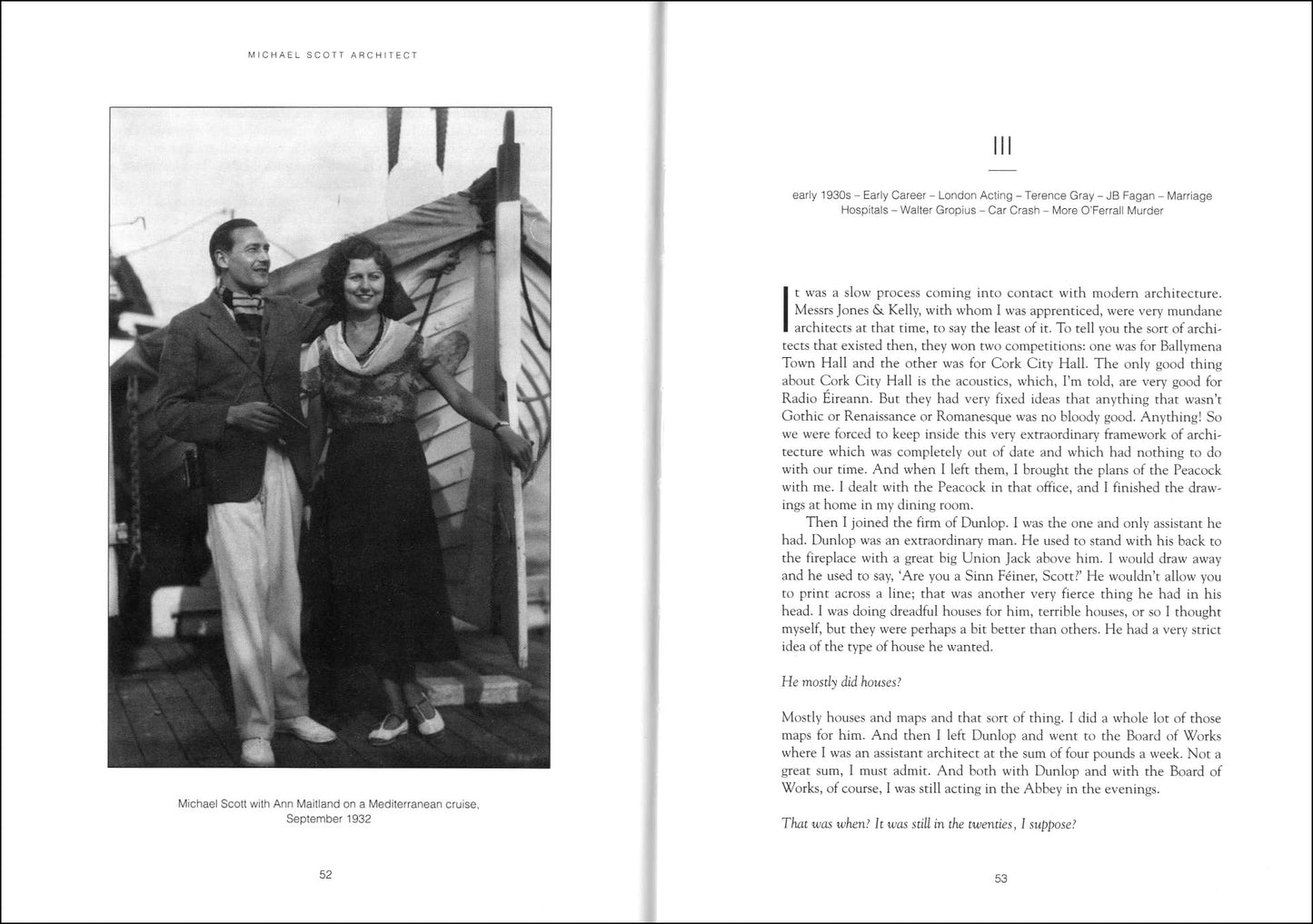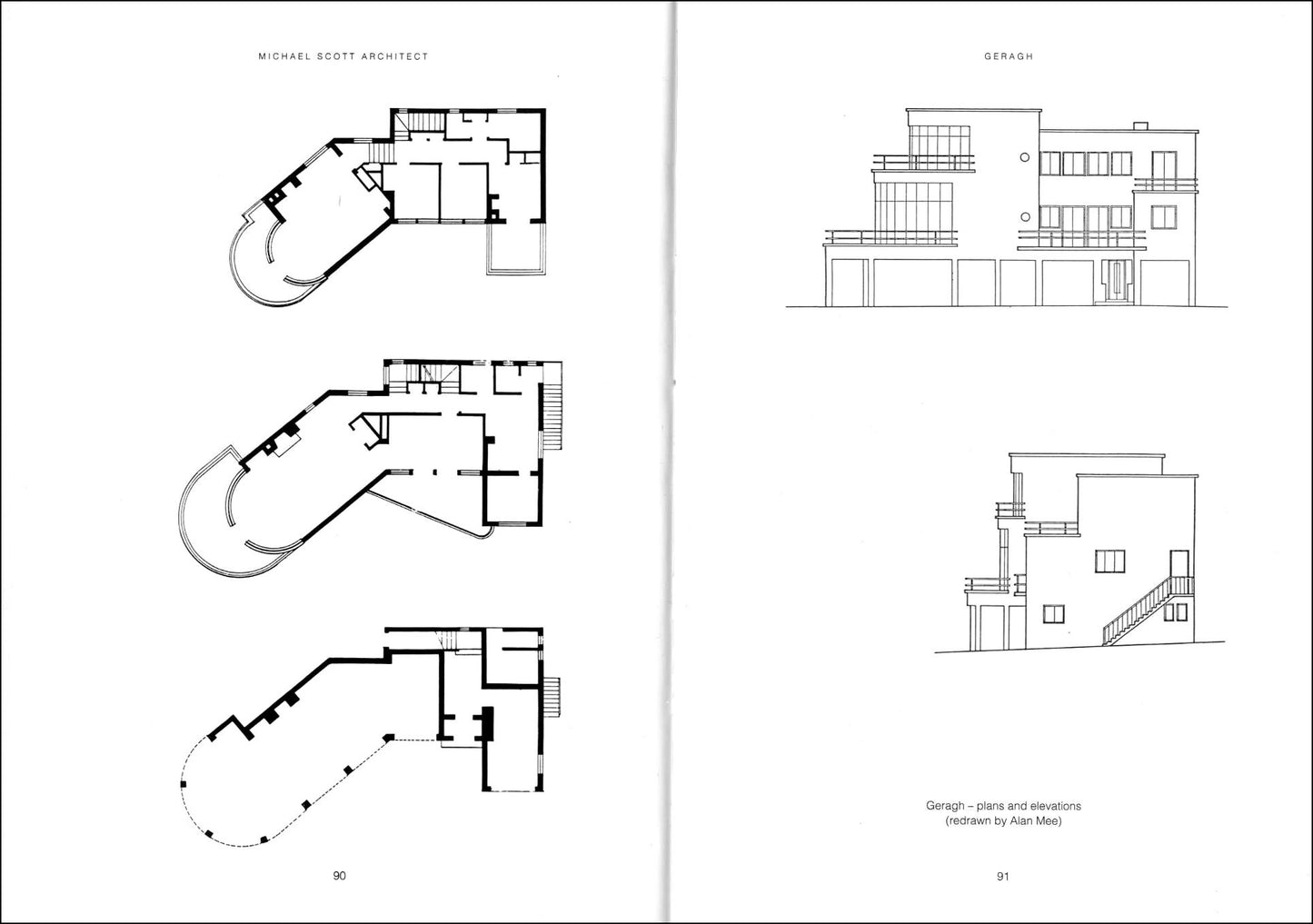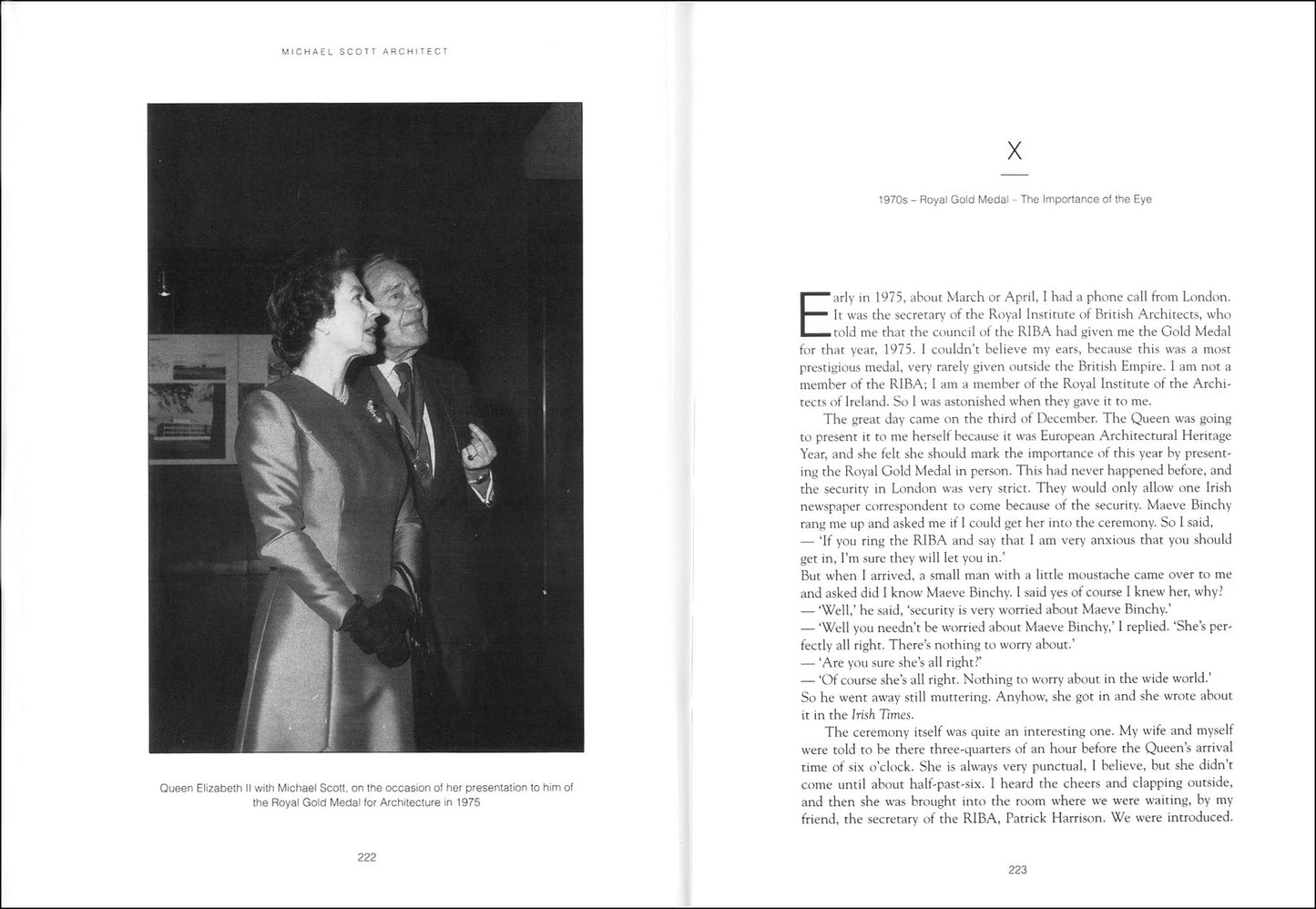Gandon Editions
MICHAEL SCOTT — in (casual) conversation with Dorothy Walker
MICHAEL SCOTT — in (casual) conversation with Dorothy Walker
Couldn't load pickup availability
Share
ed. John O’Regan, Nicola Dearey
intro by Peter Palumbo
ISBN 978 0946641 512 256pp (hb) 24 x 17 cm 188 illus index
It is impossible to imagine modern architecture in Ireland without Michael Scott. This well-researched publication, which takes the form of a book-length interview, provides a richly anecdotal account of his life and times. He was the leading pioneer of modern architecture in this country (a career that was initially begun in tandem with an acting career) and a hero for a whole generation of young Irish architects.
His most notable buildings include his own house, Geragh, at Sandycove; the Irish Pavilion at the New York World’s Fair, which earned him international recognition; Donnybrook Garage, a pioneer development in shell construction; and Busáras. His practice (which later became Scott Tallon Walker) has been responsible for many of the most architecturally significant institutional and commercial buildings in Ireland, and in 1975 he was awarded the Royal Gold Medal for Architecture by the RIBA.
His courage, independence and architectural talent, and his ability to inspire younger colleagues, made him Ireland’s foremost architect of the 20th century. Michael Scott was a true Renaissance man who was involved in almost every facet of the arts. His influence on the visual arts in Ireland in the twentieth century has been immense. His genuine love of art and his support of artists was of great importance to the art community and to the cultural and artistic development of the country. He was one of the great personalities of the age.
This fascinating portrait of the life and times of Ireland’s leading modern architect is copiously illustrated with portraits and drawings of Scott’s major buildings as well as many photographs of Scott- often in the company of his various illustrious contemporaries.
EXTRACTS
"Patriot, visionary, bon viveur, aesthete, thespian, wit, roisterer, charmer, enabler, friend and engaging companion, husband, father – Michael Scott was all of these, and an immensely distinguished architect with an international reputation ... He trained simultaneously for the stage and as an architect, and in his early days as an actor, he changed his name lest the client of his architectural practive should be put off by his being and actor ... for all the colour of that personality, his architecture had a great simplicity, for he was a child of the Modern Movement."
— from the introduction by Peter Palumbo
"The New York World’s Fair was a very exciting business. I got a telephone call from Freddie Boland, who was assistant secretary in the Department of Industry and Commerce. He asked me to come to the Department to discuss a most important matter. He told me that I had been appointed architect for the Irish Pavilion at the New York World’s Fair. He said that this was a very important assignment, and also that costs would be an important factor. But the most important thing of all was that it would have to be something that the 25 million Irish-Americans could connect with. I asked them what they meant by that. I told them that there was no Irish architecture after the twelfth century, that all the rest was influenced one way or another by outside sources.
— ‘What do you expect me to do?’ I said. ‘A couple of round towers and the Rock of Cashel?’ I didn’t sleep for the next three nights thinking about it! This was the first time that Ireland had ever appeared in any world forum, and it was of great importance that it would be of some character and distinction. I thought about the theme of the exhibition, which was ‘A New World of Tomorrow’. It struck me that as aeroplane travel would undoubtedly increase more and more, buildings would be looked at in plan as well as in elevation. Therefore, if I had a symbol of Ireland in plan, and, in elevation a modern building of our time, it would ring all the right bells. I thought of beehive huts, but you wouldn’t know what they were from the air. And then the terrible thought came into my head: could I do a shamrock?
At first I dismissed it. Then the more I thought of it, the more I thought it mightn’t be bad in plan, so I made various sketches. It developed into a two-storey building, with a long, double-height, curved hall. The exhibits were in the leaves of the shamrock. Outside, on the end wall, was the word ‘Éire’ and a large sculptural piece. I have always tried to have art in my buildings. I asked various sculptors to submit maquettes for a competition, and Herkner’s, undoubtedly, was by far the best. It really looked very splendid. Frederick Herkner was a young man who had been appointed to the College of Art shortly before this. I had given a line of a poem by Yeats as a theme for the sculpture – ‘Your mother Éire is always young’."
— Michael Scott, from chapter IV
|
CONTENTS Introduction by Peter Palumbo 11 Foreword 17 I Childhood 20 II 1920s – School of Art – Patrick Touhy – Abbey School of Acting 30Jones & Kelly – Abbey Tour of USA – Seán O’Casey Lennox Robinson – Mainie Jellett – Victor Waddington III early 1930s – Early Career – London Acting – Terence Gray 52JB Fagan – Marriage – Hospitals – Walter Gropius – Car Crash More O’Ferrall Murder IV late 1930s – Cinemas – Geragh – Anna Mae Wong 82New Architecture – The Irish Pavilion, New York World’s Fair V early 1940s – Flann O’Brien Stories – Fr Donal O’Sullivan 104Evie Hone– Post-War Hospitals, France and Poland VI late 1940s – Chassis Factory – Donnybrook Garage 118Four Provinces House – Hilary Heron Sculptures VII Busáras – Edwin Lutyens – Micheál Mac Liammóir 130 VIII 1950s – Abbey Theatre – Venice Biennale– Alvar Aalto 160CIAM – The Arts Council – Hospitals – Galway Churches University College Galway – Monsignor Pádraig de Brún Georges Rouault IX 1960s – Joyce Museum – Church at Knockanure 200Church at Moneystown – Carmel Snow – Heart Attack Rosc Exhibitions X 1970s – Royal Gold Medal – The Importance of the Eye 222 A Biographical Note 228 List of Buildings by Michael Scott 232 Selected Bibliography 235 List of Illustrations 240 Index 248 n f
FEATURED / MENTIONED BUILDING (chronological) St Ultan’s Children’s Hospital, Dublin 1928-29 Gate Theatre, Dublin 1930 House at Shankill, Co Dublin (St Anne’s) c1930 House at Howth Road, Co Dublin 1933-34 Abbey Theatre, Dublin 1934-35 County Hospital, Portlaoise 1933-36 County Hospital, Tullamore 1934-37 Geragh, Sandycove, Co Dublin 1937-38 The Irish Pavilion, New York World’s Fair 1938-39 Regal Cinema, Dublin 1938 Williams House, Tullamore 1938 Ritz Cinema, Carlow 1937-38 Ritz Cinema, Athlone 1938-39 Ritz Cinema, Clonmel 1939-40 Gray House, Virginia, Co Cavan 1940s Chapel at Emo, Co Laois 1942 Charlemont Street Flats, Dublin 1944 O’Rourke’s Bakery, Dublin 1943 Four Provinces House, Dublin 1942-48 FitzGerald House at Rossdohan, Co Kerry 1946- Chassis Factory, Inchicore, Dublin 1946-48 Donnybrook Garage, Dublin 1946-51 Busáras / Áras Mhic Dhiarmada, Dublin 1946-53 St Ultan’s Children’s Hospital, Dublin (extension) 1947-48 Houses at Ailesbury Drive, Dublin 1946-49 McCairns Motors (car-assembly plant), Santry, Dublin 1952-54 Bridgefoot Street Flats, Dublin 1955 Church at Lettermore, Co Galway (project) 1955 Church at Salthill, Co Galway (oratory) 1956 Stewarts & Lloyds (warehouse, offices), Dublin Port 1954-56 Ballroom, Shelbourne Hotel 1954-1956 County Hospital, Roscommon 1949-53 County Offices, Roscommon 1954 Carlow General Hospital (project) 1956-57 Abbey Theatre, Dublin 1958-66 Brown & Polson (factory), Inchicore, Dublin 1956-59 RTE, Donnybrook, Dublin 1960- Church at Moneystown, Co Wicklow (project) 1961-62 James Joyce’s Tower, Sandycove, Co Dublin 1961-62 Church at Knockanure, Co Kerry 1960-64 University College Galway 1964- |
REVIEWS
This is the most successful example I have read of a book based on transcribed conversation... Time and again, one can hear Michael’s melodious voice talking from the page. — John Bowman, Irish Times ‘Books of the Year’
What Dorothy Walker and Gandon Editions have done is to assemble skilfully a series of interviews with Scott, well illustrated with photographs and drawings ... and the end result is a fascinating portrait of the life and times of an exceptional character ... The book is beautifully designed and a highly entertaining read. — Seán Rothery, Irish Times
What comes from reading this book ... is what an amazingly affable and conversational person Michael Scott was ... This book is a wonderful insight into the man and his ideas. — Waterstone’s Guide to Irish Books
I must resist the temptation to continue exulting in this story of the past seventy years of modern Irish art and architecture as evoked by Michael Scott’s words and point out that his contribution to the period was considerable ... No student of architecture can afford to be without this book. — James White, Irish Arts Review
The book is nicely designed, well illustrated ... It is a very enjoyable and highly entertaining read, and provides a fascinating portrait ... of an exceptional and well-nigh legendary character in Irish architecture. — Paul Larmour, Perspective
This is a beautifully presented book ... represents the most extensive first-hand record of the achievements of this pioneer of modern architecture in Ireland. — Plan
Reading Michael Scott is like browsing through somebody’s papers: it’s full of little gems of anecdotal revelation. — Ciarán Carty, Sunday Tribune
Taped-and-transcribed interviews can make difficult reading, but these are well edited and compulsive. — Books Ireland
